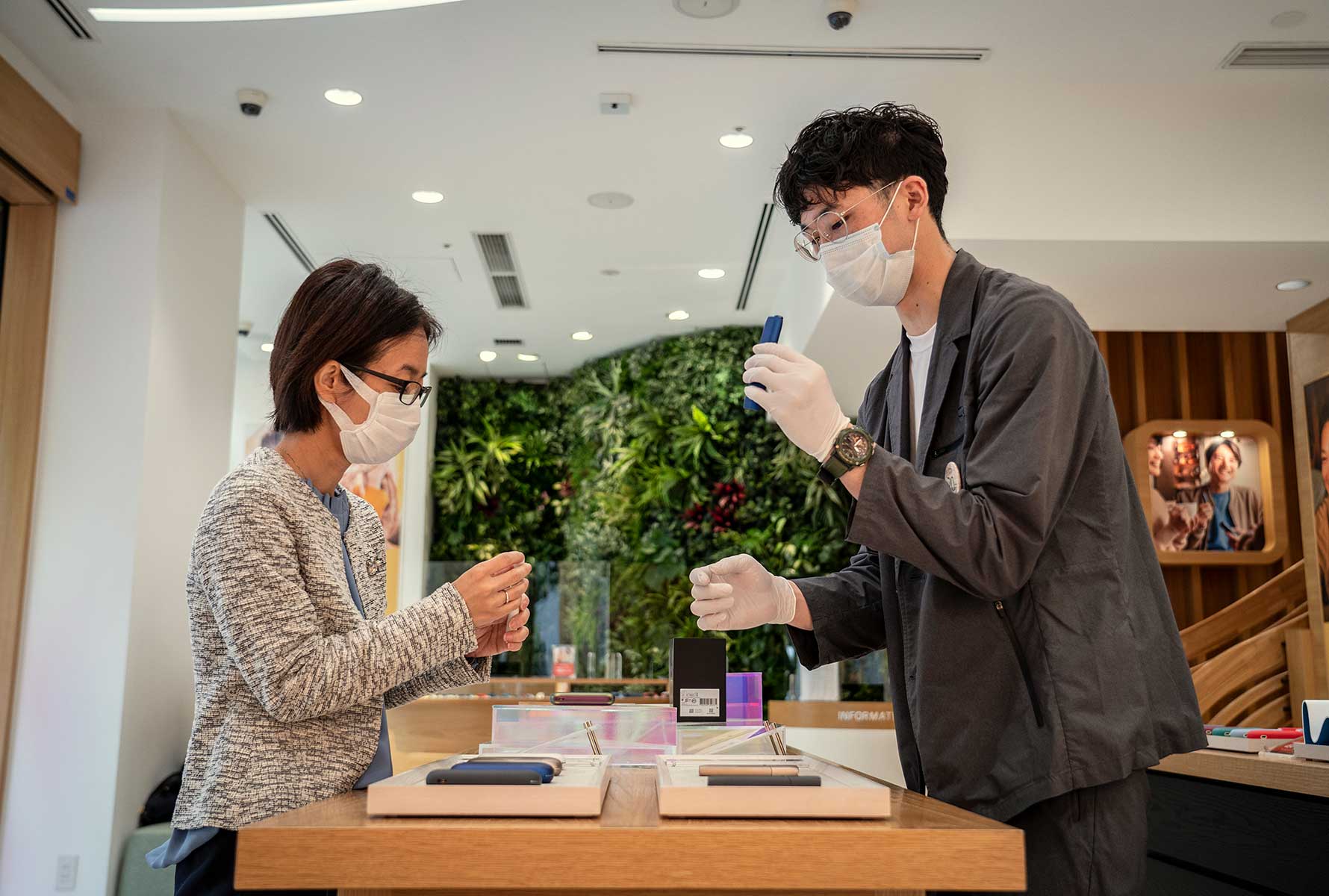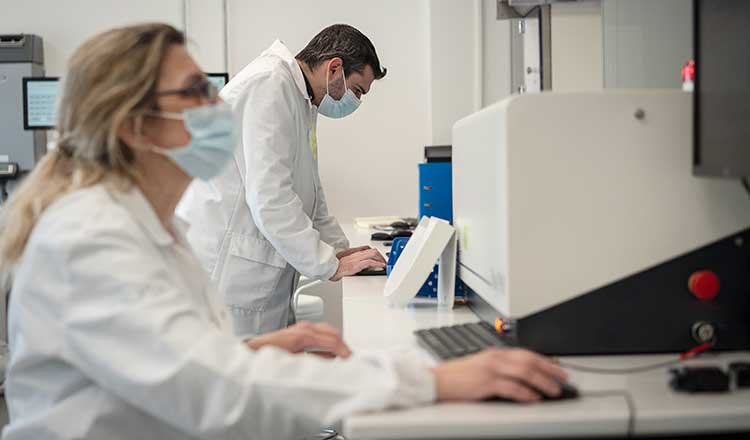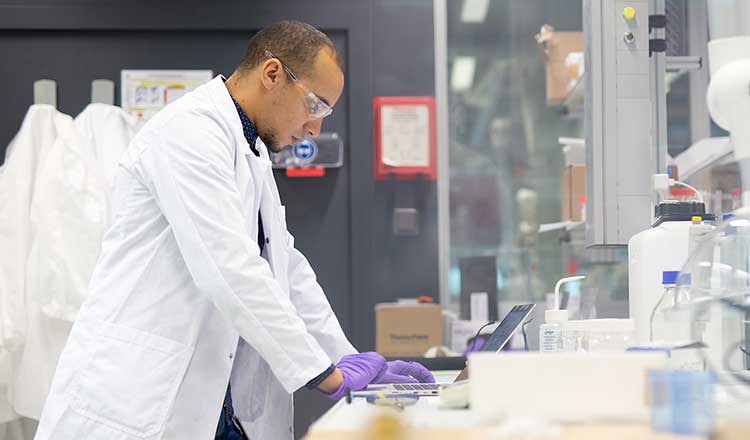Product awareness
The first component of our access strategy is raising awareness. This means consumers understanding what causes morbidity and mortality, and raising awareness of smoke-free products among adults who smoke and will continue smoking. We want these smokers to understand the differences and benefits of our smoke-free products in comparison with combustible cigarettes, while also ensuring they understand that smoke-free products are addictive and not risk-free. In our awareness-raising efforts, we are cautious to guard against use by unintended audiences such as never smokers, former smokers, and youth (read more on Responsible marketing and sales practices).
Tobacco product marketing is subject to extensive restrictions worldwide, including outright bans in some countries. The regulatory environment varies substantially across markets, making it difficult—or almost impossible—in some countries to make people who smoke aware of available alternatives to cigarettes and how and why they should use them instead.
As of the end of 2020, we estimate that only 36 percent of adult smokers in the markets in which PMI commercialized IQOS were aware of the product’s features and benefits compared with smoking cigarettes.1 This lack of information arguably presents the single biggest hurdle to achieving tobacco harm reduction. It is also potentially the easiest to overcome if and when public health organizations decide to inform adult smokers—or allow them to be informed—about the benefits of smoke-free products.
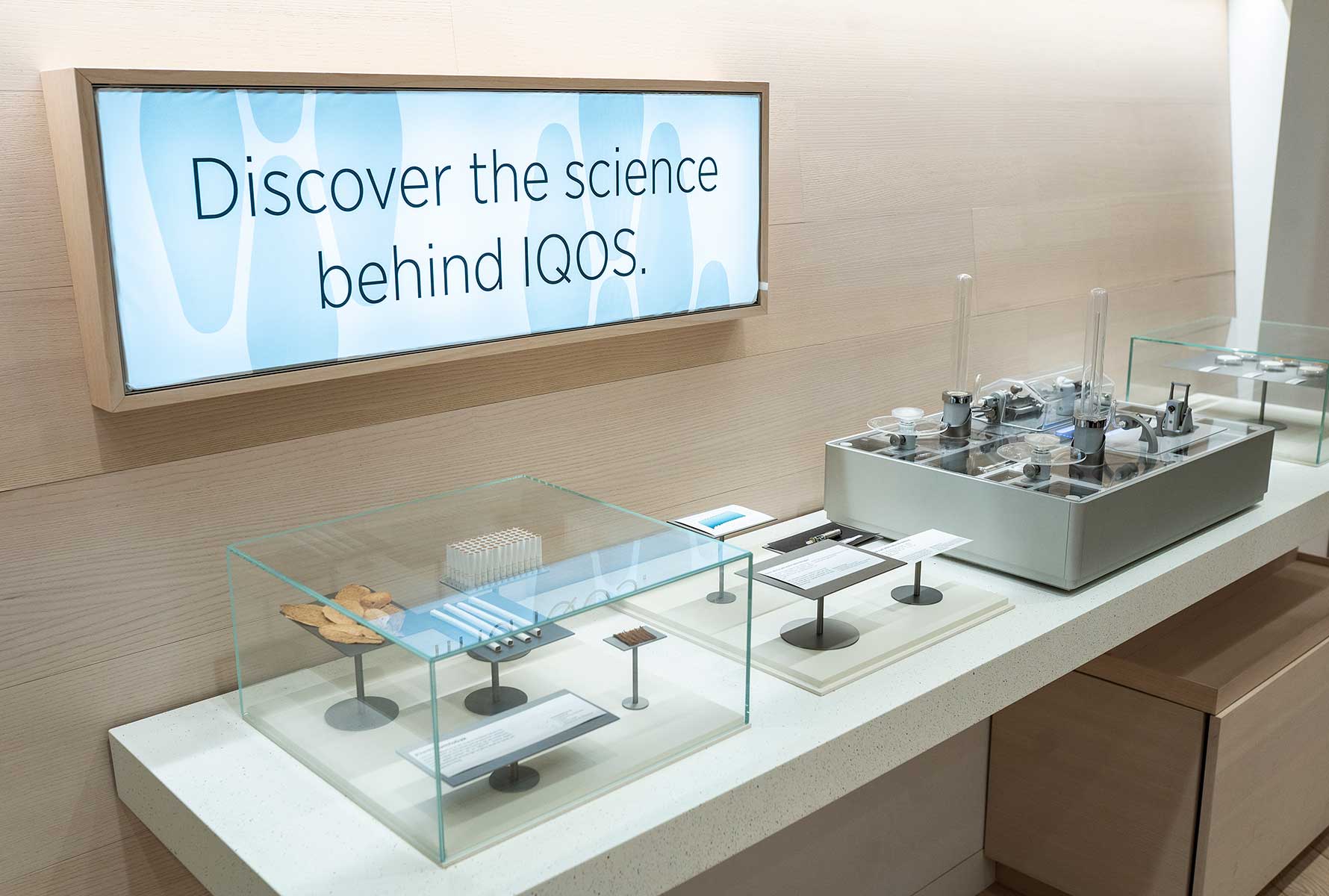
In this chapter
- Product awareness
- Product acceptability
- Product availability
- Products affordability
- Next steps
Product information
At PMI, we seek to provide adult consumers with accurate and non-misleading information about our smoke-free products so that people who would otherwise continue to smoke can choose to switch. We have internal processes in place to ensure that our consumer messages meet this standard. We have also developed a program of perception and behavior assessment studies to understand how our smoke-free products are perceived and how users will behave with the products.
A cross-functional team of scientists, market researchers, lawyers, communication experts, and marketers review consumer messages about our product features and benefits. To establish whether a statement is accurate (substantiated), the team verifies it against available information on product design and characteristics or scientific evidence available either from the literature or directly from our scientific studies or consumer research. To confirm a message is clear and non-misleading, particularly for reduced risk messages, we conduct comprehension research in various markets and carefully analyze the results before allowing the message to be released.
The team also works directly with markets to ensure proper deployment of centrally developed consumer communication and that locally developed marketing materials meet our standards and local law requirements.
Perception and behavior assessment studies help us evaluate risk perceptions of smoke-free products among various adult consumer groups. The results of our studies to date show that the adult consumer groups tested have a very good understanding that IQOS presents less risk than cigarettes but is not risk-free and that it is riskier than smoking cessation. Additionally, when assessed in the context of specific communication materials, more than 90 percent of participants in consumer studies understood that IQOS is not intended for nonsmokers, and more than 80 percent comprehended that quitting the use of all tobacco is the best way to reduce the risk of tobacco-related disease.
We do not conduct studies on individuals under the legal age to purchase tobacco. We have conducted studies of our heat-not-burn product IQOS among young adult never smokers (age 18-25) and these tests indicate a very low or no intention to use or try IQOS among these young adult never smokers. However, our FDA MRTP exposure modification order required that we submit a post-market surveillance and studies plan, which had to be approved by the Agency. As part of that plan, our commercialization partner in the United States, Altria, will conduct a secondary analysis of Altria’s existing Underage Tobacco Use Survey (UTUS), which is nationally representative survey of U.S. household-dwelling individuals 13-20 years of age. IQOS-specific questions were added to the UTUS and will be used to estimate awareness and use of IQOS among underage individuals. This information is part of the FDA’s ongoing post-market surveillance efforts related to IQOS, which were deemed necessary to grant the MRTP exposure modification order.
Our premarket and post-market studies guide all our consumer-facing activities and communication, including the internal assessment of consumer messages. The opinions expressed about smoke-free products by public health organizations, regulatory bodies, and NGOs have a big impact on individual smokers’ decisions, so it is critical that these organizations avoid contributing to category confusion or misinformation. To illustrate existing misconceptions: A study found that “the proportion of U.S. adults who perceived e-cigarettes as less harmful [than cigarettes] declined from 39.4 percent in 2012 to 33.9 percent in 2017” and that “during the same period, the proportion of adults who perceived e-cigarettes as equally harmful as cigarettes more than tripled from 11.5 percent in 2012 to 36.4 percent in 2017.” Another study also found that “the proportion of U.S. adults who correctly perceived e-cigarettes as less harmful than cigarettes decreased each year from 41.1 percent in 2013-2014, 31.5 percent in 2014-2015, and 25.3 percent in 2015-2016.” It is of paramount importance that science and facts prevail for the 1.1 billion smokers worldwide.
Unsmoke
Global corporate campaign
Consumer engagement at retail
To help smokers transition to smoke-free products, we are shifting from a business-to-business to a consumer-centric model. This is a highly complex and resource-intensive undertaking. In the table below, we illustrate some of the dimensions of this change in our business model, showcasing the complexity and scale of the change. This transformation requires significant changes to our internal processes, skill set, and mindset. It also requires a substantial and long-term investment in infrastructure, systems, and capability building. Therefore, we have to maintain a careful pace while scaling things up.
Purchasing and trying a smoke-free product is only one step along the conversion journey of an adult smoker who switches to a less-harmful alternative. It is essential that we set in place the right infrastructure to support smokers along every leg of this journey.
We currently have 24 consumer call centers, where adult users can contact us if they have a question about the product or its use. Insights we receive are fed back into our product development. At the end of 2020, PMI had a footprint of 259 stores dedicated to IQOS and over 2,200 exclusive IQOS retail touchpoints worldwide.2 These retail outlets offer personalized support to adult consumers, starting with explaining how the product should be used and how to clean it. In our boutiques, interested adult smokers can learn about heated tobacco technology and its benefits, communicate with our staff, and try the product. Our IQOS coaches are trained on our Good Conversion Practices and are required to interact with adult smokers exclusively.
In addition to the IQOS stores, there are premium resellers—select stores in which we provide information about our smoke-free products to adult smokers, offering them an opportunity to have a session with trained staff to learn about the product, its benefits, and how to use it within the environment they regularly visit to purchase tobacco products. Additionally, these locations offer IQOS users access to related services such as device cleaning and replacement (in the case of defects). These sites also permit current users to experience and access new device ranges and accessories with which to personalize their IQOS products.
Digital capabilities help us become more efficient in serving consumers. In 2020, we shifted our focus in this direction as COVID-19-related lockdown measures inhibited other means of connecting with consumers. In countries where this is permitted, adult smokers who express an interest in IQOS are offered an online session with a remote IQOS coach. Consumers can also benefit from additional services via other digital touchpoints. With the consumer’s consent, we use customer relationship management (CRM) to offer tailored communication and promotions to consumers, according to their specific interests and the stage they have reached in their conversion journey. CRM also allows us to process, analyze, and respond swiftly to consumer feedback collected across all touchpoints.
Product acceptability
Smokers will only stop smoking and switch to better alternatives if they prefer these products over cigarettes.
An important indicator of whether our heat-not-burn product meets consumer preferences is the so-called full-switching rate: The percentage of IQOS users who stopped smoking versus total IQOS users. In 2020, the average full-switching rate for IQOS was 72 percent, which significantly exceeds the performance of competing products, for which dual use (i.e., using both smoke-free products and cigarettes) is the norm. The perfect full-switching rate is 100 percent, and this is our goal as we continue to develop and improve our products and make cigarettes truly obsolete. IQOS is a new product with different characteristics to cigarettes. During the switching journey, users go through an adaption process where dual use may occur. Our goal is to support consumers to make this adaptation process as short as possible. It is only by switching completely, and eliminating cigarettes, that the full benefits of smoke-free products like IQOS can be realized.
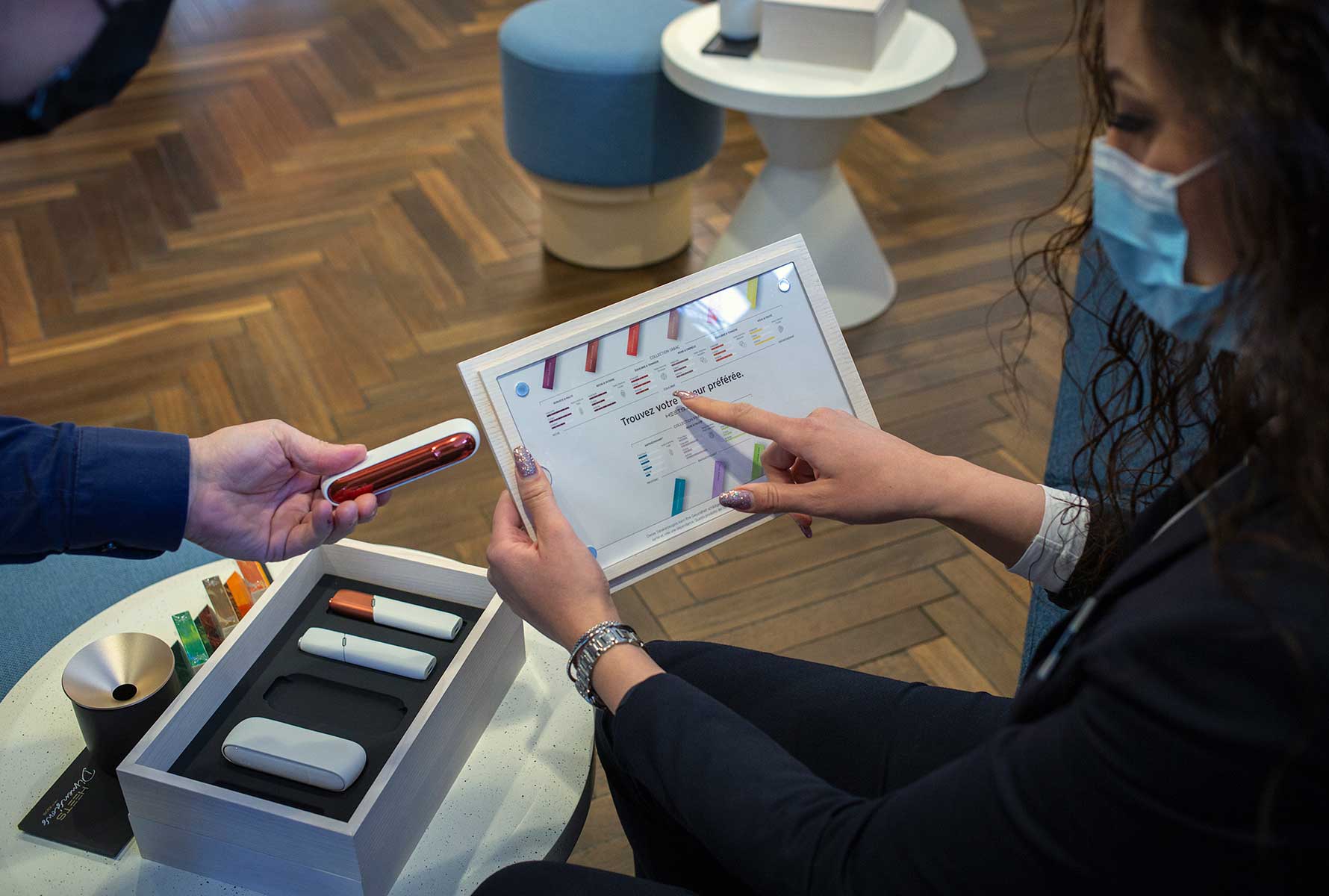
Product design
We designed our smoke-free products to reduce the risk of disease compared with smoking, while replicating as much as possible the taste, nicotine delivery, and ritual characteristics of cigarettes, so that adults who will not quit are willing to switch to these alternative products.
The likelihood that adult smokers will consider a smoke-free product a viable alternative to cigarettes is dependent on the overall sensory experience, nicotine delivery, and clarity on potential health benefits. With regard to nicotine, the FDA stated in its 2019 premarket tobacco application decision: “IQOS delivers nicotine in levels close to combustible cigarettes suggesting a likelihood that IQOS users may be able to completely transition away from combustible cigarettes and use IQOS exclusively.”3 We discuss the role of nicotine in our smoke-free products in more detail here and on our PMI Science website.
As of December 31, 2020, IQOS heated tobacco units were available in over 30 taste variants to cater to a variety of tastes and maximize the probability that a smoker will switch. In 2020, we launched a flavor adviser tool, both at retail and online, to guide consumers in selecting the variant that best matches their preferences. Flavors are essential to encourage adult smokers to switch, and their use should be preserved; however, certain flavors, such as candy- or dessert-like, could be particularly appealing to youth and should not be used. In all circumstances, heated tobacco units, as any tobacco or nicotine products, should be regulated, including the way they are marketed to ensure they do not particularly appeal to youth.
At PMI, we have implemented a central governance system, under which new flavored heated tobacco products and e-vapor products are assessed, and by which those product variants are subject to a specific assessment framework that requires data and checkpoints in the process to demonstrate premarket that a new flavored product proposition is not particularly appealing to minors or other unintended audiences. As part of the assessment, we review literature and market data and we also conduct behavior research assessment by “online” consumer testing on a case-by-case basis. Only once this review and validation process is done, new flavored heated tobacco or e-vapor products are commercialized. To confirm premarket findings, we also conduct post-market studies to verify that flavored tobacco and nicotine products commercialized by PMI are not particularly appealing to unintended audiences, including youth.
From concept design to commercialization at scale, our efforts to continuously enhance the experience of our smoke-free products are guided by consumer insights. We regularly incorporate product updates and new features designed to address consumer pain points to help adult smokers switch from cigarettes more seamlessly. In recent years, we have broadened our portfolio of IQOS heat-not-burn devices, and we are currently commercializing four models. In 2020, we focused on finalizing a major product update: A new heating technology that addresses consumer pain points related to the need for regular device cleaning and the risk of breaking the heating blade. We will launch this new technology in 2021.

Our efforts to continuously enhance the experience of our smoke-free products is guided by consumer insights
Post-market studies and surveillance
We conduct post-market studies to understand how the product is used and by whom. These studies are necessary to confirm the results of our premarket perception and behavior assessments, to measure the extent to which current adult smokers switch to the product, and to ensure never and former smokers are not using it.
We have established repeated studies in 45 countries among adult IQOS users. These studies involve in total about 100,000 participants and allow the measurement of use patterns of adult IQOS owners over time. In Japan, we are conducting cross-sectional surveys to measure trends in prevalence and patterns of IQOS use over time and to assess the impact of the product on public health. The results thus far have highlighted a very low proportion of tobacco-use initiation with IQOS (2.0 percent of IQOS users in 2017, 1.3 percent in 2018, and 0.6 percent in 2019) and very low use by former smokers (only 0.1 percent of adult former smokers reinitiated tobacco use with IQOS).
Additionally, results from an independent study commissioned by the Japanese Ministry of Health among middle and high school students found that the use of heated tobacco products among this group is extremely low—and lower than smoking cigarettes.1
We are also conducting similar cross-sectional surveys in Italy and Germany. The results of these studies have shown comparable dynamics to the ones observed in Japan. Between 2018 and 2019, the highest proportion of tobacco use initiation with IQOS among the IQOS users was 0.7 percent and it was observed in Italy, while the lowest proportion was 0.2 percent and it was detected in Germany. With respect to former smokers reinitiating tobacco use with IQOS, the highest value was equal to 1.5 percent in Germany and the lowest was 0.1 percent in Italy.
Overall, the data from our studies, as well as independent studies, confirm that IQOS is reaching the intended audience, adult smokers, and is of very limited interest to adults who have never used nicotine products before or who had already stopped using tobacco.
We welcome and encourage rigorous monitoring of the overall tobacco and nicotine market by governmental bodies in a way that comprehends the dynamics of this new market and enhances a constructive dialogue on regulation that can accelerate the switching of smokers, who do not quit, to better alternatives.

Product availability
Whether we can make our smoke-frаee products available to adult smokers depends on several factors, including some beyond our control. The country’s regulatory conditions must be favorable to allow the launch of the product there in a commercially viable way. If they are, we must build sufficient production capacity, which depends in part on trade zones and tariff barriers. Lastly, we need to establish the right market organization to commercialize the product and implement the necessary consumer interaction described earlier in this section.
As of December 2020, our smoke-free products were available in 64 markets, either in key cities or nationwide. Based on this geographic footprint, we estimate that around 150 million adult smokers (i.e., 64 percent of the total number of adult smokers in the markets where we have launched) have physical access to purchase IQOS devices and consumables.
Production capacity
Expanding the sale of smoke-free products requires significant investment in our production capacity. In particular, the manufacturing of smoke-free product consumables requires that we build new factories or convert existing cigarette factories and increase our capital expenditure—for example, to purchase new machinery. In 2020, eight of our 39 factories were dedicated—either partially or fully—to the manufacture of our smoke-free product consumables.
Market launches
In 2020, we launched IQOS in 12 additional markets, including Lebanon and the Philippines. This brought the total number of markets in which the product is commercialized to 64. Of these markets, 52 percent are in non-OECD countries. Several countries, including Australia, India, and Singapore, do not permit the sale of heated tobacco products. We nonetheless continue to engage with stakeholders to advocate for regulations that would allow under a well-defined framework the sale of IQOS and other scientifically substantiated smoke-free products in these countries. We do not believe that banning such products is a rational policy, especially considering that these countries permit the sale of the most harmful tobacco product: cigarettes.
In addition to external factors, internal constraints affect the rate at which we can roll out smoke-free products globally. PMI is present in over 175 markets, but the size and capacity of our local organizations vary. Not every market has the resources and capacity to launch smoke-free products immediately. We evaluate the commercial viability of launching smoke-free products in each market to decide how to prioritize internal resources internationally.
Distribution channels
By the end of 2020, there were 27 markets in which our heat-not-burn product, IQOS, and its consumables were available for purchase nationwide in physical channels or e-commerce, where allowed. In the other markets in which we have launched IQOS, the product initially is offered in key cities, allowing us to gain experience and build capacity before we proceed with a nationwide rollout.
Expanding the geographic availability of our smoke-free products requires that we leverage a variety of retail channels. In 2015, we started opening and running our own retail stores in markets where IQOS was present. These consumer touchpoints allow us to communicate and engage directly with adult smokers. They enable adult smokers to see, touch, and test the product where allowed. We rely on both stationary and temporary sales areas, with established flagship stores and pop-ups. As of the end of 2020, we had 259 permanent IQOS boutiques and stores worldwide, mainly in key cities and areas of high consumer traffic. Where legally permitted, we also run e-commerce sites for IQOS, allowing adult consumers, where allowed, to purchase the product online and have it delivered to their homes (51 markets in 2020).
The indirect retail environment consists of our traditional trade partners (e.g., tobacco retailers) and key account chains (e.g., convenience stores, petrol/gas stations). Based on the product portfolio handled and the services provided to consumers, we classify the general trade and key accounts universe into three groups: Consumable sellers, service points, and premium resellers. At consumable sellers, the main focus is to provide IQOS users with a convenient option for everyday purchases of the heated tobacco units. At service points, consumers can also access services related to IQOS, such as device replacement in case of defect. Premium resellers offer consumers the full spectrum of services, including device cleaning and learning sessions, along with a full brand experience.
At the end of 2020, there were over 2,200 exclusive IQOS retail touchpoints and 3,800 indirect retail brand experience touchpoints worldwide, and around 749,000 points of sale at which IQOS heated tobacco units were sold.

Product affordability
We will only achieve a smoke-free future if all those adult smokers who do not quit tobacco and nicotine but would like to switch to smoke-free products can afford to do so. Economics of innovative smoke-free products are massively different than those of a century-old product like cigarettes. Unlike with cigarettes, adult smokers who want to switch to IQOS must first buy a device. The retail price of these devices ranges from around USD 29 to 136, depending on the model and country, with a geographic average price for the lowest-cost IQOS device being USD 50. These high-quality devices require significant production costs to ensure they consistently function within the well-defined specifications of the scientific substantiation package.
To address the potential cost barrier for adult smokers who would like to switch, we have implemented various solutions, including initial lending of the device or payment over time, and we have lowered the price of existing IQOS device versions following the launch of newer versions. We also enhanced battery performance, thus improving the longevity of the devices. Beyond lowering the average annual costs for the user, this improves the ecological footprint of IQOS devices. In 2020, we also introduced the licensed LIL SOLID device, for use with Fiit consumables, at a price below the cheapest IQOS device in Russia and Ukraine.
The second aspect of affordability is the price of the consumable. Currently, the production costs of the heated tobacco units used with IQOS devices are, on average, somewhat higher than those of cigarettes. Heated tobacco units undergo a special manufacturing process that is vastly different from the manufacturing of cigarettes, and the products require an increased level of quality assurance in factories. We also incur other costs that are not applicable to cigarettes, such as the costs of scientifically substantiating the reduced-risk profile of these products.
Importantly, IQOS has much higher commercialization costs compared with cigarettes due to the need to properly introduce consumers to this new product and explain its functionalities. These costs include our customer care call centers and follow-up to ensure users do not fall back into smoking during their conversion journey. Beyond production and commercialization costs, a key factor driving tobacco product retail prices is the excise tax. Excise taxes on cigarettes are generally higher than those on smoke-free products. Within the smoke-free category, electronic cigarettes tend to be taxed at a lower rate than heat-not-burn tobacco products.
Differential taxation is an appropriate fiscal policy considering the fundamentally different risk profiles of combusted tobacco products and non-combusted alternatives.
This approach plays an important role in incentivizing adult smokers, who would otherwise continue smoking, to switch away from cigarettes and other combusted tobacco products, and encourages manufacturers to channel their future investments and R&D towards better alternatives.
The combined effect of cost and tax differences is such that the price to the consumer of IQOS heated tobacco units is typically below that of premium cigarettes and is sometimes, as in New Zealand and the U.K., at the low end of cigarette pricing. We estimate that heated tobacco units are priced the same as or lower than a smoker’s current cigarette brand for 58.6 percent of smokers in the geographies where we currently commercialize IQOS.4
To help address potential affordability barriers, we are also expanding our heated tobacco unit consumables range by offering brands at multiple price points in certain markets. The most notable example is in Japan, where we introduced a mainstream-priced brand in 2019, and we view this as a necessary strategy for a broader range of markets over time. We have also leveraged our agreement with KT&G in this regard, by offering HTU brands at price points below our HEETS consumables in both Russia and Ukraine, as part of our strategy to grow the heated tobacco category by offering a wider range of product choices, including based on price.
Clearly, to achieve our vision of a smoke-free future, our smoke-free products must be affordable to all adult smokers within each market. The same reasoning applies across countries. Our efforts aim to reach all adult smokers in all countries, both in the OECD and outside the OECD. We are only at the beginning of commercializing a full-fledged portfolio of smoke-free products at a global scale and are actively seeking partnerships to accelerate a smoke-free future. In addition to our cooperation with Altria Group, Inc. on the commercialization of IQOS in the U.S., we secured an agreement with KT&G in January 2020 to commercialize its portfolio of smoke-free products outside its home country of South Korea. In 2020, we successfully commercialized KT&G’s heat-not-burn product, LIL SOLID, in Russia and Ukraine alongside our IQOS product, offering consumers a wider range of taste, price, and technology choices.
Performance highlights
Next steps
Our long-standing aspiration is that by 2025 at least 40 million people will have switched to our smoke-free products and stopped smoking. To achieve this ambitious goal, we will need to work on all four access drivers: Awareness, acceptability, availability, and affordability. This, in turn, requires that we continue to focus resources on smoke-free products.
Consumer feedback received during the launch of IQOS VEEV in New Zealand and the Czech Republic in 2020 will inform our launch in additional countries in 2021. We also plan to enter the nicotine pouch category in 2021.
We expect that the launch of the new induction heating version of the IQOS heat-not-burn product in 2021 will effectively address consumer pain points related to our current heating technology and enable easier conversion due to increased intuitiveness. We anticipate that this will boost consumer acceptance of IQOS, thereby accelerating a full switching away from cigarettes.
We will continue to do all we can to give full access to our smoke-free products to those adults who otherwise would continue to smoke. However, several factors are outside our control. Governments, in particular, can accelerate the end of smoking. They can ensure through regulation that adult smokers have accurate information about smoke-free products. They can introduce product standards to ensure that only scientifically substantiated smoke-free products are commercialized. And, through risk-proportionate regulation and taxation, they can provide the right incentives to encourage smokers and manufacturers to switch from cigarettes to better, scientifically substantiated alternatives.
This online content about our Integrated Report should be read in conjunction with PMI’s 2020 Integrated Report. The information and data presented here cover the 2020 calendar year or reflect status at December 31, 2020, worldwide, unless otherwise indicated. Where not specified, data come from PMI estimates. Please also refer to 'About this report' on page 3 of the 2020 Integrated Report for more information. Aspirational targets and goals do not constitute financial projections, and achievement of future results is subject to risks, uncertainties and inaccurate assumptions, as outlined in our forward-looking and cautionary statements on page 145. In the 2020 Integrated Report and in related communications, the terms “materiality,” “material,” and similar terms, when used in the context of economic, environmental, and social topics, are defined in the referenced sustainability standards and are not meant to correspond to the concept of materiality under the U.S. securities laws and/or disclosures required by the U.S. Securities and Exchange Commission.

